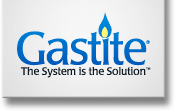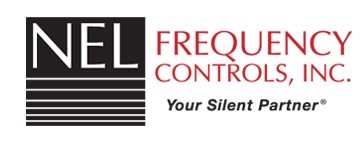Global Automotive Heat Exchanger Market Insights 2020 by Top Regions, Top Manufacturers, Type and Application
- Report Code : SMA2046934
- Published On: Sep, 2020
- Category : Automotive & Transportation
- Pages : 169
-
Research Scope
This report researches the worldwide Automotive Heat Exchanger market size (value, capacity, production and consumption) in key regions like United States, Europe, China, Japan and other regions.
This study categorizes the global Automotive Heat Exchanger breakdown data by manufacturers, region, type and application, also analyzes the market status, market share, growth rate, future trends, market drivers, opportunities and challenges, risks, sales channels, distributors.
Global Automotive Heat Exchanger market size will increase to xx million US$ by 2025, from xx million US$ in 2019, growing at a CAGR of xx% during 2020-2025.
Global Major Manufacturers of Automotive Heat Exchanger Breakdown Data, including:
Denso
Mahle
Hanon System
Calsonic Kansei
Valeo
Alcoil
Dana
Pranav Vikas
Senior
Tata AutoComp
Koyorad
Tokyo Radiator
G&M
T.RAD
Modine
Sanden
KB AutoTech
Nanning Baling
Zhejiang Yinlun
Qingdao Toyo
Wuxi Guanyun
Jiangsu Jiahe
LURUN
Fawer
South Air
Weifang Hengan
Paninco
Shandong Tongchuang
Chaolihi Tech
Huaerda
Global Sales Breakdown Data of Automotive Heat Exchanger by Type basis, including:
Aluminum Type
Copper Type
Others
Global Consumption Breakdown Data of Automotive Heat Exchanger by Application, including:
Commercial Vehicle
Passenger Vehicle
Global Automotive Heat Exchanger Consumption Breakdown Data by Region, including:
North America
United States
Canada
Mexico
Asia-Pacific
China
Japan
Korea
India
Southeast Asia
Australia
China Taiwan
Rest of Asia-Pacific
Europe
Germany
UK
France
Italy
Russia
Spain
Benelux
Rest of Europe
South America
Brazil
Argentina
Colombia
Chile
Rest of South America
Middle East & Africa
Saudi Arabia
Turkey
Egypt
South Africa
Rest of Middle East & Africa
Reporting Period
Historia Year 2014-2019
Base Year 2019
Estimated Year 2020E
Forecast Year 2021F-2025F
Chapters Follows:
Chapter 1: describing Automotive Heat Exchanger product scope, industry environment, market trends, market influence factor and market risks, marketing strategy to increase market position.
Chapter 2: describing Automotive Heat Exchanger competitive situation, and position in the world.
Chapter 3: describing the top player of Automotive Heat Exchanger market size and global market share of Automotive Heat Exchanger from 2017 to 2019.
Chapter 4: describing North America Automotive Heat Exchanger, with market size, key players, major counties.
Chapter 5: describing Europe Automotive Heat Exchanger, with market size, key players, major counties.
Chapter 6: describing Asia-Pacific Automotive Heat Exchanger, with market size, key players, major counties.
Chapter 7: describing South America Automotive Heat Exchanger, with market size, key players, major counties.
Chapter 8: describing Middle East & Africa Automotive Heat Exchanger, with market size, key players, major counties.
Chapter 9: describing Automotive Heat Exchanger breakdown data by type, from 2014 to 2019.
Chapter 10: describing Automotive Heat Exchanger breakdown data by application, from 2014 to 2019; and Automotive Heat Exchanger Downstream Customers Analysis.
Chapter 11: describing Automotive Heat Exchanger market dynamics and channel analysis.
Chapter 12: describing Automotive Heat Exchanger market forecast, by regions, type and application, from 2019 to 2025.
Chapter 13: describing Automotive Heat Exchanger research findings and conclusion.
-
With tables and figures helping analyze worldwide Global Automotive Heat Exchanger market, this research provides key statistics on the state of the industry and is a valuable source of guidance and direction for companies and individuals interested in the market.
1 Market Overview1.1 Automotive Heat Exchanger Product Introduction (Definition, Market Development & History, Type)
1.1.1 Automotive Heat Exchanger Definition
1.1.2 Automotive Heat Exchanger Market Development & History
1.1.3 Automotive Heat Exchanger Type
1.1.3.1 Aluminum Type
1.1.3.2 Copper Type
1.1.3.3 Others1.2 Automotive Heat Exchanger Segment by Application and Downstream Consumers
1.3 Industry Environment
1.3.1 Policy Environment
1.3.2 Economics Environment
1.3.3 Sociology Environment
1.3.4 Technology
1.3.5 Similar Industries Market Status
1.3.6 Major Regions Development Status
1.3.7 Industry News Analysis1.4 Market Trends
1.5 Market Influence Factor
1.6 Marketing Strategy
1.7 Investment Opportunity
1.7.1 Industry Investment Opportunity
1.7.2 Regional Investment Opportunity
1.7.3 Risk Analysis
2 Market Size by Players2.1 Global Automotive Heat Exchanger Sales by Key Players
2.2 Global Automotive Heat Exchanger Revenue by Key Players
2.3 Global Automotive Heat Exchanger Price by Key Players
2.4 Global Automotive Heat Exchanger Gross Margin by Key Players
2.5 Market Competition Analysis
2.5.1. Market Concentration Rate and Trend Analysis
2.5.2 Potential Entrants Threat2.6 Mergers & Acquisitions, Expansion Plan
3 Automotive Heat Exchanger Major Manufactures Profile3.1 Denso
3.1.1 Basic Information
3.1.2 Sales, Revenue, Price, Gross Margin and Global Share
3.1.3 Business Region Distribution
3.1.4 SWOT Analysis3.2 Mahle
3.2.1 Basic Information
3.2.2 Sales, Revenue, Price, Gross Margin and Global Share
3.2.3 Recent Developments
3.2.4 SWOT Analysis3.3 Hanon System
3.3.1 Basic Information
3.3.2 Sales, Revenue, Price, Gross Margin and Global Share
3.3.3 Business Region Distribution
3.3.4 SWOT Analysis3.4 Calsonic Kansei
3.4.1 Basic Information
3.4.2 Sales, Revenue, Price, Gross Margin and Global Share
3.4.3 Business Region Distribution
3.4.4 SWOT Analysis3.5 Valeo
3.5.1 Basic Information
3.5.2 Sales, Revenue, Price, Gross Margin and Global Share
3.5.3 Business Region Distribution
3.5.4 SWOT Analysis3.6 Alcoil
3.6.1 Basic Information
3.6.2 Sales, Revenue, Price, Gross Margin and Global Share
3.6.3 Business Region Distribution
3.6.4 SWOT Analysis
3.7 Dana
3.7.1 Basic Information
3.7.2 Sales, Revenue, Price, Gross Margin and Global Share
3.7.3 Business Region Distribution
3.7.4 SWOT Analysis
3.8 Pranav Vikas
3.8.1 Basic Information
3.8.2 Sales, Revenue, Price, Gross Margin and Global Share
3.8.3 Business Region Distribution
3.8.4 SWOT Analysis
3.9 Senior
3.9.1 Basic Information
3.9.2 Sales, Revenue, Price, Gross Margin and Global Share
3.9.3 Business Region Distribution
3.9.4 SWOT Analysis3.10 Tata AutoComp
3.10.1 Basic Information
3.10.2 Sales, Revenue, Price, Gross Margin and Global Share
3.10.3 Business Region Distribution
3.10.4 SWOT Analysis
3.11 Koyorad
3.11.1 Basic Information
3.11.2 Sales, Revenue, Price, Gross Margin and Global Share
3.11.3 Business Region Distribution
3.11.4 SWOT Analysis
3.12 Tokyo Radiator
3.12.1 Basic Information
3.12.2 Sales, Revenue, Price, Gross Margin and Global Share
3.12.3 Business Region Distribution
3.12.4 SWOT Analysis
3.13 G&M
3.13.1 Basic Information
3.13.2 Sales, Revenue, Price, Gross Margin and Global Share
3.13.3 Business Region Distribution
3.13.4 SWOT Analysis
3.14 T.RAD
3.14.1 Basic Information
3.14.2 Sales, Revenue, Price, Gross Margin and Global Share
3.14.3 Business Region Distribution
3.14.4 SWOT Analysis
3.15 Modine
3.15.1 Basic Information
3.15.2 Sales, Revenue, Price, Gross Margin and Global Share
3.15.3 Business Region Distribution
3.15.4 SWOT Analysis
3.16 Sanden
3.16.1 Basic Information
3.16.2 Sales, Revenue, Price, Gross Margin and Global Share
3.16.3 Business Region Distribution
3.16.4 SWOT Analysis
3.17 KB AutoTech
3.17.1 Basic Information
3.17.2 Sales, Revenue, Price, Gross Margin and Global Share
3.17.3 Business Region Distribution
3.17.4 SWOT Analysis
3.18 Nanning Baling
3.18.1 Basic Information
3.18.2 Sales, Revenue, Price, Gross Margin and Global Share
3.18.3 Business Region Distribution
3.18.4 SWOT Analysis
3.19 Zhejiang Yinlun
3.19.1 Basic Information
3.19.2 Sales, Revenue, Price, Gross Margin and Global Share
3.19.3 Business Region Distribution
3.19.4 SWOT Analysis3.20 Qingdao Toyo
3.20.1 Basic Information
3.20.2 Sales, Revenue, Price, Gross Margin and Global Share
3.20.3 Business Region Distribution
3.20.4 SWOT Analysis
3.21 Wuxi Guanyun
3.21.1 Basic Information
3.21.2 Sales, Revenue, Price, Gross Margin and Global Share
3.21.3 Business Region Distribution
3.21.4 SWOT Analysis
3.22 Jiangsu Jiahe
3.22.1 Basic Information
3.22.2 Sales, Revenue, Price, Gross Margin and Global Share
3.22.3 Business Region Distribution
3.22.4 SWOT Analysis
3.23 LURUN
3.23.1 Basic Information
3.23.2 Sales, Revenue, Price, Gross Margin and Global Share
3.23.3 Business Region Distribution
3.23.4 SWOT Analysis
3.24 Fawer
3.24.1 Basic Information
3.24.2 Sales, Revenue, Price, Gross Margin and Global Share
3.24.3 Business Region Distribution
3.24.4 SWOT Analysis
3.25 South Air
3.25.1 Basic Information
3.25.2 Sales, Revenue, Price, Gross Margin and Global Share
3.25.3 Business Region Distribution
3.25.4 SWOT Analysis
3.26 Weifang Hengan
3.26.1 Basic Information
3.26.2 Sales, Revenue, Price, Gross Margin and Global Share
3.26.3 Business Region Distribution
3.26.4 SWOT Analysis
3.27 Paninco
3.27.1 Basic Information
3.27.2 Sales, Revenue, Price, Gross Margin and Global Share
3.27.3 Business Region Distribution
3.27.4 SWOT Analysis
3.28 Shandong Tongchuang
3.28.1 Basic Information
3.28.2 Sales, Revenue, Price, Gross Margin and Global Share
3.28.3 Business Region Distribution
3.28.4 SWOT Analysis
3.29 Chaolihi Tech
3.29.1 Basic Information
3.29.2 Sales, Revenue, Price, Gross Margin and Global Share
3.29.3 Business Region Distribution
3.29.4 SWOT Analysis3.30 Huaerda
3.30.1 Basic Information
3.30.2 Sales, Revenue, Price, Gross Margin and Global Share
3.30.3 Business Region Distribution
3.30.4 SWOT Analysis
4 North America Automotive Heat Exchanger Market Analysis4.1 North America Automotive Heat Exchanger Sales
4.2 North America Automotive Heat Exchanger Revenue
4.3 Key Players in North America
4.4 North America Automotive Heat Exchanger Market Size by Country
5 Europe Automotive Heat Exchanger Market Analysis5.1 Europe Automotive Heat Exchanger Sales
5.2 Europe Automotive Heat Exchanger Revenue
5.3 Key Players in Europe
5.4 Europe Automotive Heat Exchanger Market Size by Country
6 Asia-Pacific Automotive Heat Exchanger Market Analysis6.1 Asia-Pacific Automotive Heat Exchanger Sales
6.2 Asia-Pacific Automotive Heat Exchanger Revenue
6.3 Key Players in Asia-Pacific
6.4 Asia-Pacific Automotive Heat Exchanger Market Size by Country
7 South America Automotive Heat Exchanger Market Analysis7.1 South America Automotive Heat Exchanger Sales
7.2 South America Automotive Heat Exchanger Revenue
7.3 Key Players in South America
7.4 South America Automotive Heat Exchanger Market Size by Country
8 Middle East & Africa Automotive Heat Exchanger Market Analysis8.1 Middle East & Africa Automotive Heat Exchanger Sales
8.2 Middle East & Africa Automotive Heat Exchanger Revenue
8.3 Key Players in Middle East & Africa
8.4 Middle East & Africa Automotive Heat Exchanger Market Size by Country
9 Market Size by Type9.1 Global Automotive Heat Exchanger Sales by Type
9.2 Global Automotive Heat Exchanger Revenue by Type
9.3 Global Automotive Heat Exchanger Price by Type
10 Market Size by Application10.1 Global Market Size by Application
10.2 Downstream Customers Analysis
10.2.1 Price Factor
10.2.2 Products Quality Factor
10.2.3 Social Factors
10.2.4 Special Needs Factor
11 Market Dynamics and Channel Analysis11.1 Market Dynamics
11.1.1 Market Capacity Analysis
11.1.2 Market Drivers and Influence Factors
11.1.3 Market Challenges
11.1.4 Porter's Five Forces Analysis11.2 Channel Analysis
11.2.1 Sales Channel
11.2.2 Distributors
12 Market Forecast12.1 Automotive Heat Exchanger Market Forecast by Type
12.1.1 Global Automotive Heat Exchanger Sales Forecast by Type
12.1.2 Global Automotive Heat Exchanger Revenue Forecast by Type12.2 Automotive Heat Exchanger Market Forecast by Application
12.2.1 Global Automotive Heat Exchanger Sales Forecast by Application
12.2.2 Global Automotive Heat Exchanger Market Share Forecast by Application12.3 Automotive Heat Exchanger Market Forecast by Region
12.3.1 Global Automotive Heat Exchanger Market Forecast by Region
12.3.2 North America Automotive Heat Exchanger Market Forecast by Countries
12.3.3 Europe Automotive Heat Exchanger Market Forecast by Countries
12.3.4 Asia-Pacific Automotive Heat Exchanger Market Forecast by Countries
12.3.5 South America Automotive Heat Exchanger Market Forecast by Countries
12.3.6 Middle East & Africa Automotive Heat Exchanger Market Forecast by Countries
14 Research Findings and Conclusion
15 Research Methodology and Data Source15.1 Research Methodology
15.2 Data Source
15.2.1 Secondary Source
15.2.2 Primary Source
-
The Global Automotive Heat Exchanger Market has been segregated into various crucial divisions including applications, types, and regions. Each market segment is intensively studied in the report contemplating its market acceptance, worthiness, demand, and growth prospects. The segmentation analysis will help the client to customize their marketing approach to have a better command of each segment and to identify the most prospective customer base.
Report Objectives / Segmentation Covered :
By Companies / players:
By Regions:
By Type:
By Application:
Frequently asked questions(FAQ's):
The Global Automotive Heat Exchanger study includes a diverse group of participants, including both market leaders and up-and-comers. Contact our sales representative to receive a complete list of companies covered in the study.
The Global Automotive Heat Exchanger Market is expected to reach a reasonable valuation by 2030; now the market is expected to shift its focus from growth to value.
As the shift to value addition continues, companies in the Global Automotive Heat Exchanger Market face the dual challenge of improving interoperability to optimize performance and experience.
The Global Automotive Heat Exchanger Industry stakeholders, executives, and experts, as well as individuals who need to develop consumer-friendly strategies and use technology to stay ahead of the competition.















